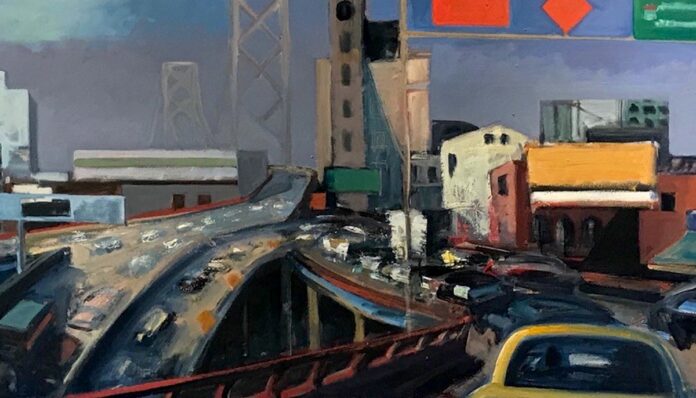Painter Lisa Esherick has a lifetime of stories to tell, most of which reflect adaptation to change and a desire to narrate time.
Esherick was born in San Francisco and has lived here most of her life, with the exception of a half-year going to school in Switzerland when she was 15, high school in Weston, Massachusetts and six months living in Hoboken, New Jersey with her then partner, the painter Julius (Jerry) Hatofsky. She knew at the age of 12 that she wanted to be an artist. As both parents were architects, pencils, paper, and the freedom to use them were always there, encouragement from the start.
Life, light and shadow, movement, and people doing ordinary things are what drive her most. She also references the passage of time, specifically the way the sun moves us forward.
“How light comes crashing down into darkness, that pushes me,” Esherick told 48 Hills.
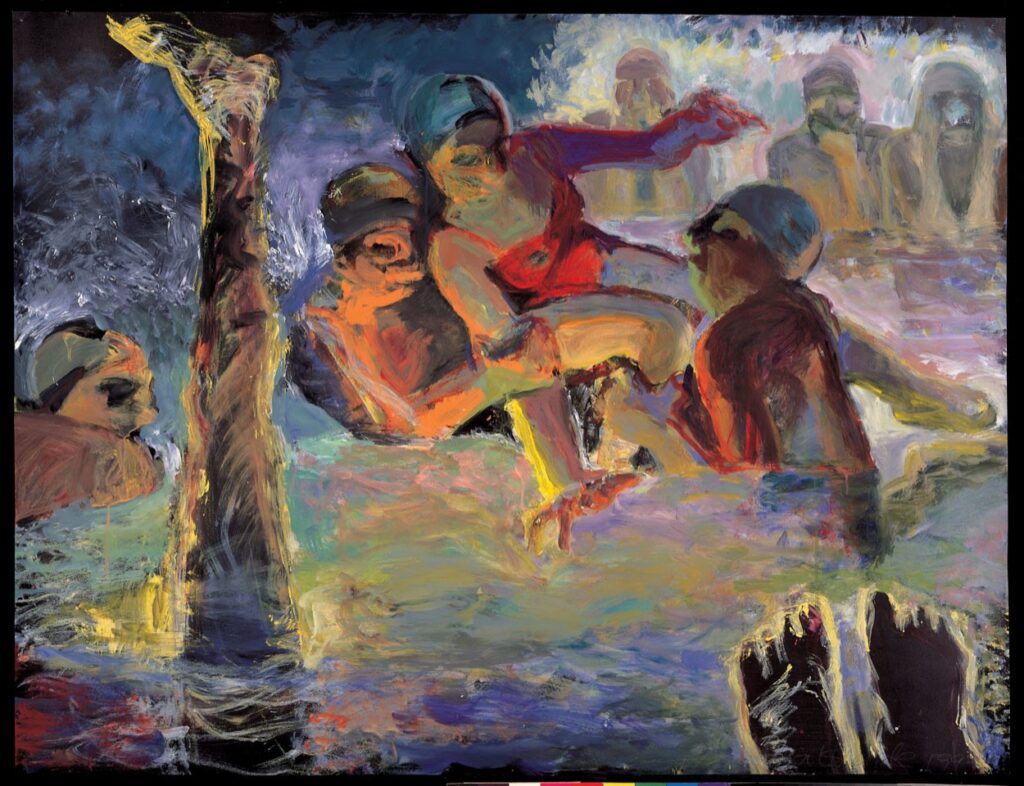
The physical act of mark-making is how she discovers where a drawing will lead her, aiming to reach beyond herself, to surprise herself. As a figurative painter and visual storyteller, Esherick invites us to “walk into” her large-scale works and feel a part of the narrative. A natural voyeur with no interest in the posed model, Esherick makes paintings of ordinary life in a way that piques imagination and allows her to pull a thread to unravel a tale.
Esherick works primarily in oils on canvas or door-skin panels, though for large scale works on paper she starts with mock-ups in charcoal and finishes with acrylic house paints, as in the painting, “On the Beach—Russia.”
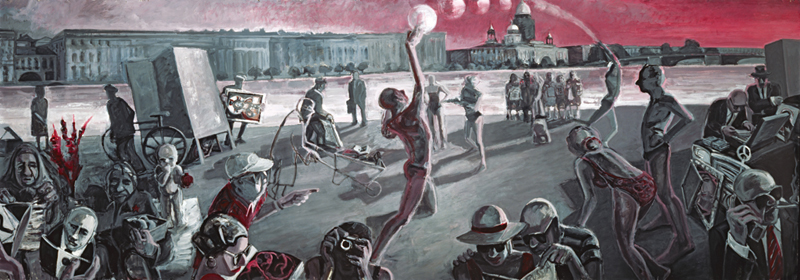
A natural night owl, Esherick used to paint into the night, especially as teaching took up her daylight hours. For 30 years, she taught art through the Older Adults program at City College, embracing populations in centers south of Market, the Tenderloin, the Mission District, Fort Mason, and senior centers throughout the city. Now at 81 and retired for 16 years, she works when an idea moves her, whether it’s day or night.
Her studio, designed by her father and built in 1987, is a large, light filled cube. A separate building set in the garden behind her southwest Berkeley home, the main floor is a painting studio. A slender balcony above is where she sets up stop-motion animation in the manner of William Kentridge (by drawing and erasing on plastic mylar).
Help us save local journalism!
Every tax-deductible donation helps us grow to cover the issues that mean the most to our community. Become a 48 Hills Hero and support the only daily progressive news source in the Bay Area.
For Esherick, it’s hard to sum up 60 years of working as a painter—where did she begin?
“Around the kitchen table of my North Beach apartment and studio, with ordinary domestic objects—all of them shapes with personalities and emotional weight—that is where I started,” she said.
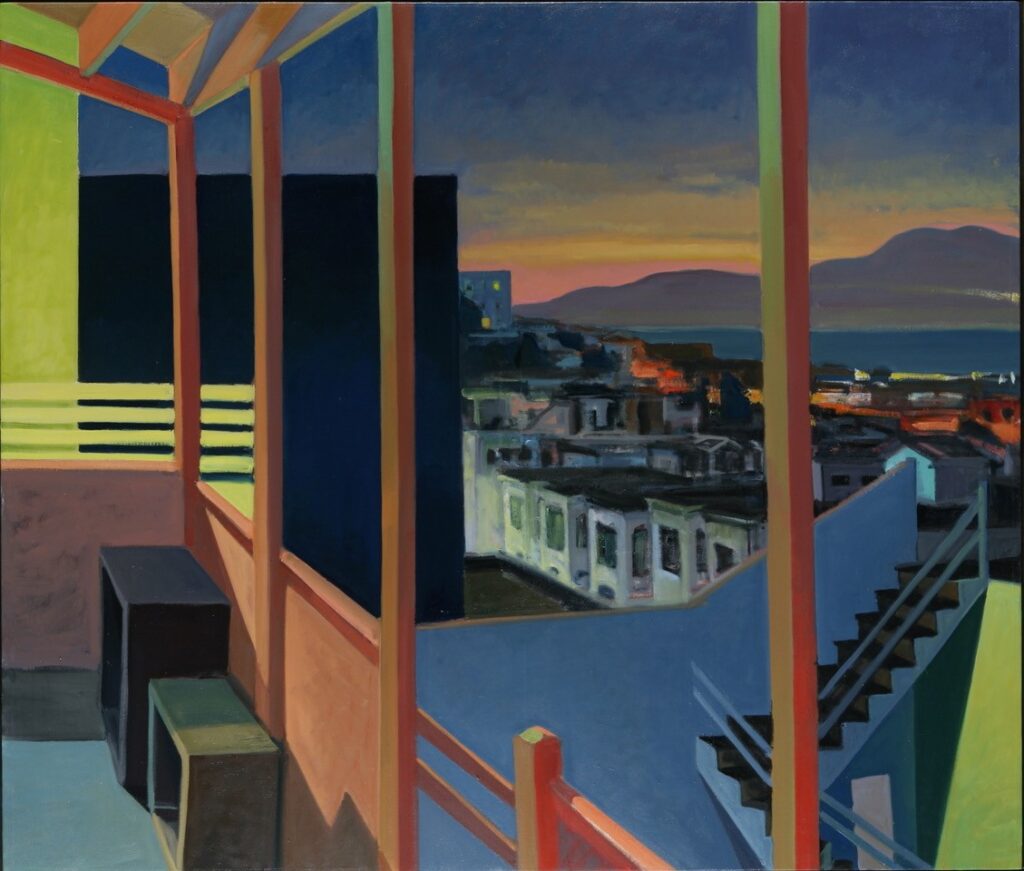
By considering their relationship in space with one another, Esherick could explore ideas of intimacy, distance and isolation. From there, she conjured stories that made sense enough to drive the painting. To this day, the still life continues to be a homing device for the painter, even as the range of subject matter has expanded to accommodate each present moment.
In the 1970s, when Esherick moved to a 1,200 square foot studio on Third Street overlooking a wrecking yard and shipyards with a view north toward the city, the industrial landscape became her subject. When she lost that studio, her van became her studio and the freeway her subject. She did drawings while stuck in traffic which became fodder for large scale paintings. Esherick says she found the city itself is a large still life, with freeways snaking through and cars and trucks animating it all.
Next, international travel became a focus, incorporating views and people and encounters. Now, hunkered down in her Berkeley flatlands neighborhood with no periscope on the world and travels curtailed, she pursues paintings in twilight, when trees and rooftops merge to make new shapes illuminated by sunsets and the night sky.
Though she does not consider herself a political painter, she is affected by world events and comments through allusion and subtlety. In 1992, Esherick made paintings based on a a questioning spirit that hovered around the conflict in Bosnia. Following travels around the world in 1995 starting in China and travel on the Trans-Siberian Railway to Russia, she made several paintings in black and white and red to epitomize the socio-political state of both countries.
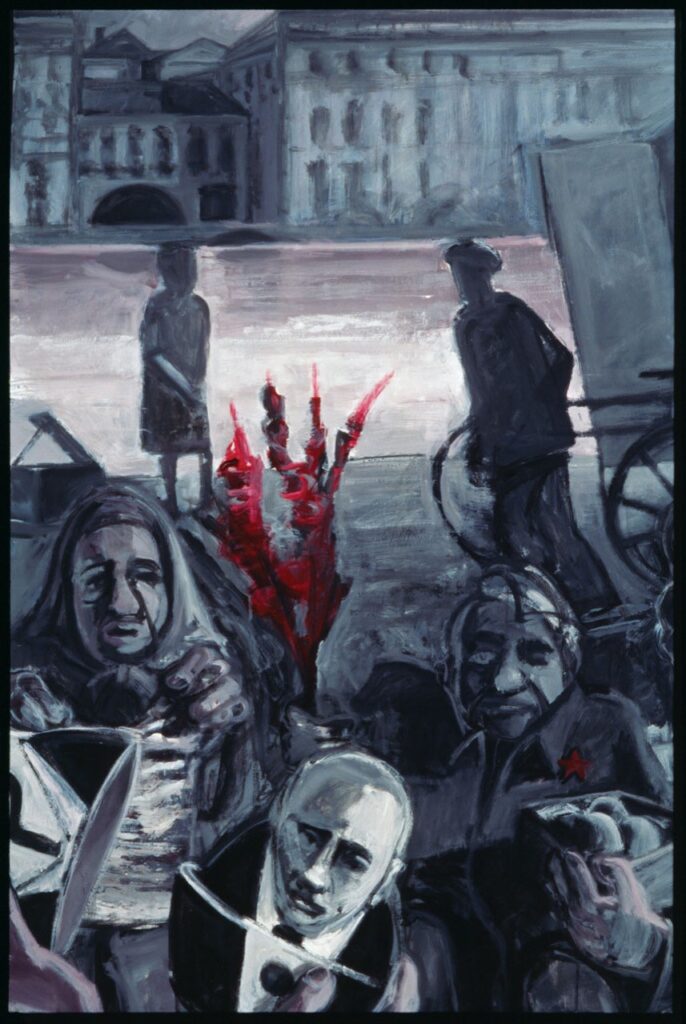
During the pandemic, she found herself distracted, wandering from one thing to another. In a desert for inspiration, her one comment on the pandemic was a still life of toilet paper. Esherick spoke of the constrictions presented, utilizing photography as a tool but finding it hard to break through the exactitude of the medium. For her, the camera offers a clue, a partial guide, but is often a stumbling block to accessing the image in paint.
Esherick is working on a new piece called “Inside Out” based on drawings and photos taken from her bedroom window across time. Approaching it as a sort of geometric puzzle in which the ingredients are space, light, values and color, the piece has gone through many iterations and—through its own life cycle—is still considering where it wants to go.
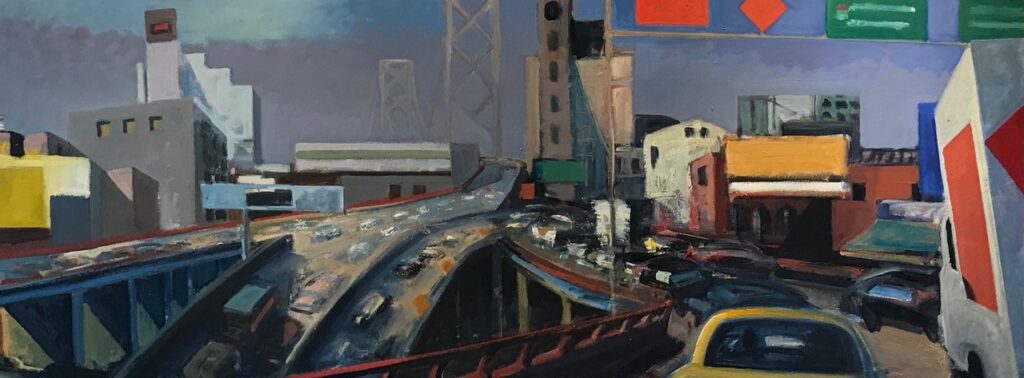
“I think I prefer leaving a painting in its raw state—a state that shows the thinking, the possibilities, the rough workings of a painting rather than the carefully pruned, edited, burnished finished product,” she said.
Esherick misses terribly the chance to be among people and draw them, to have natural exchange. She laments the focus on “the little rectangle” in everyone’s hands, people seldom looking at one another. She hopes to grab our attention away from our gadgets, bring us back to the live story. She encourages us to embrace art as a means to connect.
“I want people to look and think deeply about paintings. Not only my paintings but all paintings,” she said.
Lisa Esherick has exhibited at SHOH Gallery in Berkeley and online at George Krevsky Gallery. For more information, visit her website at lisaesherick.com.

